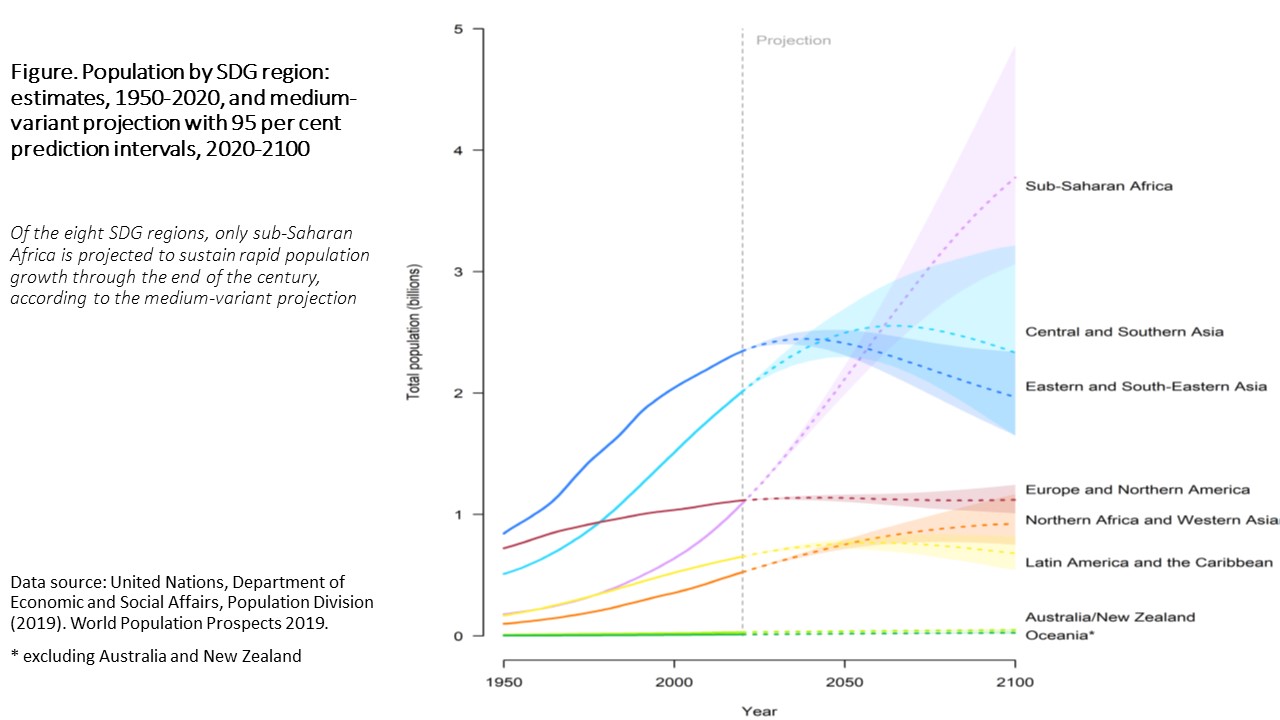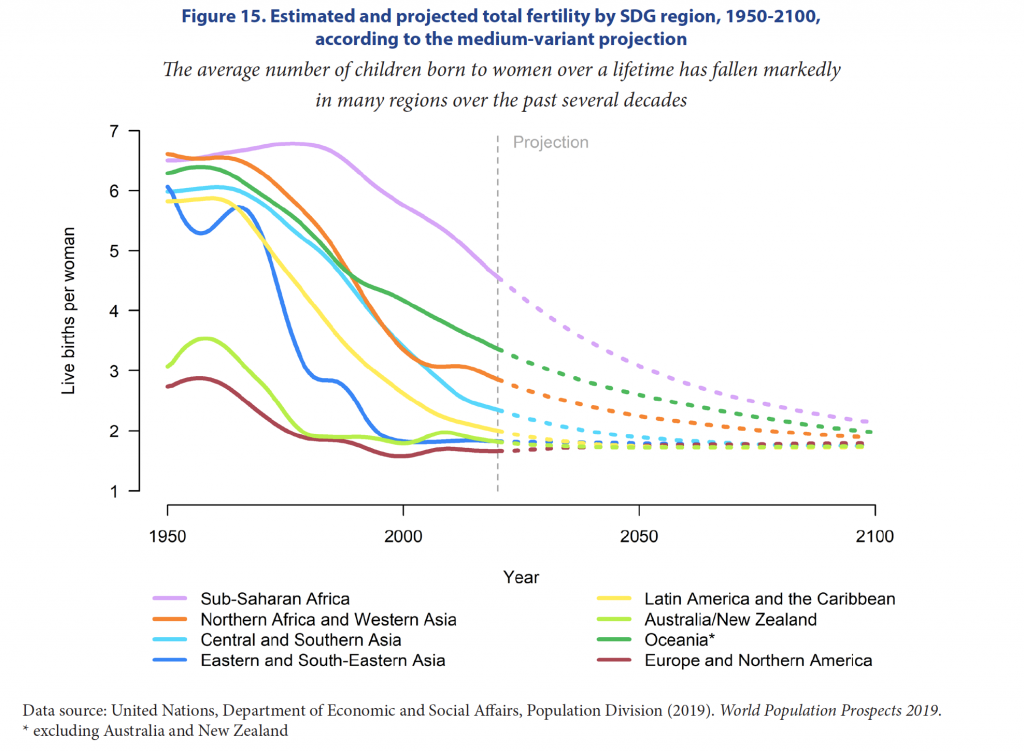
Over the next 30 years, Sub-Saharan Africa’s population is expected to double, adding an additional one billion people, said a new UN Population Division report released on 17 June 2019. It is further projected that the region’s population will still be rising fast at the end of the century, when the number of people in other regions on Earth will be reducing.
The UN report “The World Population Prospects 2019: Highlights” estimates that the world’s population is likely to increase by 2 billion persons in the next 30 years, from 7.7 billion currently to 9.7 billion in 2050 and 10.9 billion in 2010. Sub-Saharan Africa is projected to make up more than half of global population growth through 2050.
According to the report, 9 countries will be responsible for more than half the projected population growth between now and 2050, including India, Nigeria, Pakistan, Congo, Ethiopia, Tanzania, Indonesia, Egypt and the United States. Of these countries, four are in sub-Saharan Africa and one in North Africa.
Africa is the second largest and second most populous continent on Earth with an estimate of 1.31 billion people in 2019. It is home to 54 countries, including 46 in Sub-Saharan Africa and 8 in North Africa. By 2050, the population in Africa is likely to reach 2.5 billion people. Rapid population growth in Africa is an alarming event more than an amazing merit.
Although Africa has a low population density, much of Africa is less developed. It contains majority of the poorest countries on earth. According to international reports, of the 47 least developed countries over the world, 32 are in sub-Saharan Africa and one in North Africa. It is reported that the least developed countries as a group are growing 2.5 times faster than the rest of the world population.
Moreover, average life expectancy in Africa is quite low. The new UN report indicates that global average life expectancy has increased from 64.2 years in 1990 to 72.6 in 2019 and is expected to increase further to 77.1 in 2050. According to the report, life expectancy in the least developed countries is 7.4 years behind the global average. In Africa, however, the life expectancy at birth is only 52 years. Although it can be partly attributed to a widespread HIV/AIDS epidemic in Africa, low socioeconomic status is a major contributor.
It is obvious that rapid population growth in sub-Saharan Africa is driven by high fertility rate and poor family planning. As documented in the UN report, the average fertility rate in sub-Saharan Africa was 4.6 births per woman in 2019. In some countries such as Niger, women on average have incredibly seven children, the highest fertility rate in the world. In these areas, the population is projected to triple perhaps over the next 30 years.

Globally, “the average number of births per woman had fallen from 3.2 in 1990 to 2.5 in 2018 and is projected to decline further to 2.2 births by 2050”. According to the UN report, a fertility rate of 2.1 births per woman is needed to avoid population decline over the long run in the absence of immigration. Although the average fertility rate in sub-Saharan Africa has reduced from 6.8 births per woman in 1980s to 4.6 births at present, it is still much higher than the rate in North Africa (2.9 births per woman).
From now to 2050, the total number of babies projected to be born in sub-Saharan Africa will be 1.4 billion, exceeding the total number born during 1990-2020 by more than 50%. According to the UN report, less than 50 per cent of women who are married, or living with a partner, have access to modern methods of contraception in sub-Saharan countries. This figure is much lower than the global average (78 per cent of women).
A rapidly increasing number of births will pose significant challenges for both governments and non-government organizations striving to provide and expand services for mothers and newborns. Although rapid population growth in sub-Saharan Africa may provide an opportunity for economic development, it will unavoidably put a great stain on natural resources, especially in the era of global warming and resource depletion.
As said by Dr Zhenmin Liu, United Nations Under-Secretary-General for Economic and Social Affairs, fast population growth in the poorest countries brings additional challenges in the effort to eradicate poverty, achieve greater equality, combat hunger and malnutrition, and strengthen health and education systems. It will be a great challenge for sub-Saharan Africa how to achieve sustainable development with such massive population growth.
If Africa can learn lessons from the aftermath of over-population in some Asia countries such as China and India, where concerns have been raised about environmental pollution, resource depletion, and biodiversity loss, it will be realized that it is imperative to further reduce fertility rate and control population growth in Sub-Saharan Africa.

Leave a Reply